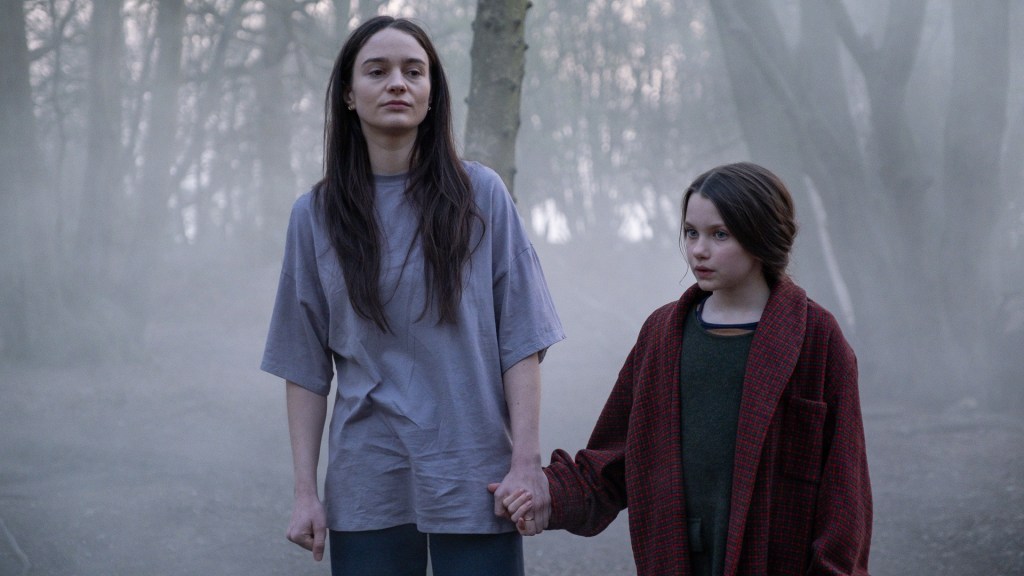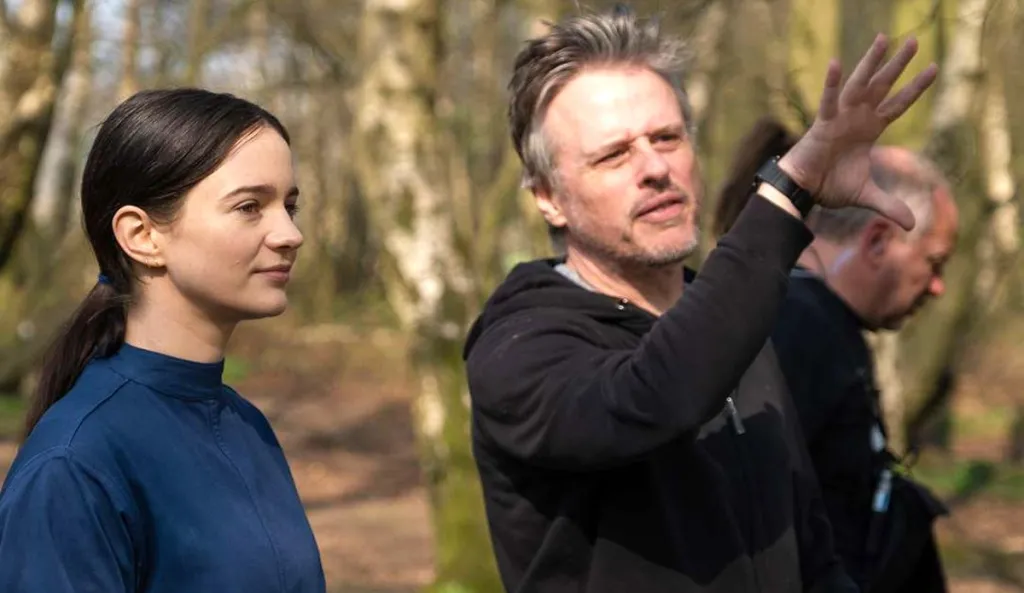Robert Morgan’s Stopmotion is a film that recognizes the beautifully disturbing quality of stop-motion animation. The film sees a young woman named Ella who has been creatively stifled by the looming shadow of her famous stop-motion artist mother. But when grim opportunity knocks, and Ella (Aisling Francios) can finally unleash her creative voice, she struggles to control it, and it takes her down a dark and violent path.
ComingSoon’s Senior Editor for Horror, Neil Bolt, spoke with Robert Morgan about his history with stop-motion animation, whether the pandemic was a factor in the story, and what about stop-motion makes it a great bedfellow for horror.
Neil Bolt: I really enjoyed how you use stop-motion animation in this, and I see you have a long history with the medium, but what got you into stop-motion?
Robert Morgan: My background is in art, painting and sculpture mostly, and I really wanted to get into filmmaking. It was an easy way to get into that, taking the things I was creating and making them more ‘’puppety’’, and that’s how I got into it.
I made a stop-motion short on the art course I was at in the ’90s and it came out out well. I suppose I just sort of fell into it, it wasn’t a plan.
Sometimes that’s the way, isn’t it? You find a medium, and you just click with it.
Yeah, exactly that.
The pandemic has had a fascinating effect on horror filmmaking that I think we’re really starting to see now with films like Stopmotion. The idea of isolating yourself to dive deep into a passion project having a horrific outcome isn’t necessarily new, but the flavor of it we get now is definitely informed by the past few years. Your film has that running through the marrow, doesn’t it?

Yeah. the film was conceived many years before the pandemic, but maybe the sense of isolation fed through it subconsciously. I mean, all of the crew were still wearing masks at the time, so it was still in that mindset, with COVID testing on set. So it wasn’t a conscious thing, but I can see what you mean, the sense of isolation and foreboding that comes from rattling around alone in a building as happens in the film.
In the process of creating puppets for Stopmotion and, indeed, in general, did you find yourself constructing their personality and stories as you built them? I imagine there’s something more intimate in creating a character physically as opposed to on the page?
Yeah, normally when I’d do something like an animated short, I’d have a vague idea of a starting point, and then I would make the character, then you see the character come alive, and that starts suggesting a certain world and a certain personality that then comes through when you animate it. So it is a kind of weird sort of summoning when working with puppets. It’s almost occult, you know, there’s a weird ritualistic process to it where you’re bringing this thing to life, conjuring it.
Which is the story the film tells itself to some degree isn’t it?
Yeah, it is about that, in a way, even down to the costumes that Ella and her mother wear. Those almost ritualistic gowns were a deliberate thing to give it this almost occult process. A ceremony that you do.
It especially stands out against the other side of stop-motion animation shown in the film. This lucrative, profitable market for advertising. There’s an art vs. commercial value thing going on in that parallel.
Yeah, very different worlds.
Is that something you’ve come up against in animation during your career?
I suppose it came out of that. Ella is a very extreme character in terms of her devotion to the craft. It’s almost a religious experience. So the idea of working for a commercial is the very antithesis of why she does it.
Personally, I’ve never worked in commercials at all,l so I don’t really know what that’s like. I’ve worked on a few music videos, but not that. I have no interest to either, but I’m not as violently against them as Ella is! So no, I have no interest in that side of things, but I definitely don’t have any hatred towards it.
So you see it more as, ‘’I don’t want to work on someone else’s vision to that extent’’?
Totally, yeah. It’s such hard work doing animation, so I don’t have any interest in doing for someone else.
Totally understandable! The mother/daughter relationship is so well done because it shows how complex emotions can be in an abusive family situation. What did you draw from for that love/hate dynamic? Naturally, I don’t think we’d see it that extreme in reality, but aspects of it certainly ring true.
I have a very good relationship with my parents, so it’s not like this at all. And they’re not really creative. I mean, they are in their own way, but they’re not artists. So that aspect didn’t come from real life. It more came out of the feeling we had with Ella, where she starts out not believing in her own creative voice. The film is then about her discovering that and ultimately being unable to control it.

So when Robin and I were writing the film, we wanted a device that would accentuate that lack of a voice, and the best way to do that would be to have her living in the shadow of someone who does have a voice; a very clear voice. Not only that, because Ella’s mother’s health is failing, Ella has effectively had to become her mother’s hands. She basically becomes a puppet herself, having to execute someone else’s vision, and having no say of her own. We just thought that was a more harsh environment to start from than having someone moping about saying, ‘’Ugh, I can’t come up with any ideas’’
To round off the interview, Horror and stop-motion are familiar bedfellows in cinematic history; what is it about that union that works so well do you think?
I think it’s two things. The way it looks. It has an inherently uncanny vibe to it. There’s this hyper-intensity to the movement.
A jitteriness?
Yeah, it’s almost too alive. It’s very intense. My theory, and this is the second point, is that it has something to do with the fact it’s an inanimate dead object that has the illusion of life. It’s like a form of necromancy. I mean there’s a line in the film, ‘Bringing dead things to life’’.So yeah, it’s the quality of the movement and that sort of black magic aspect of it. I’m actually surprised that more people don’t tap into that naturally disturbing quality of it.
That’s definitely something the horror-led stop-motion films of the past have shown to some extent.
Yes, absolutely.
Stopmotion will be in theaters starting February 23, 2024.










